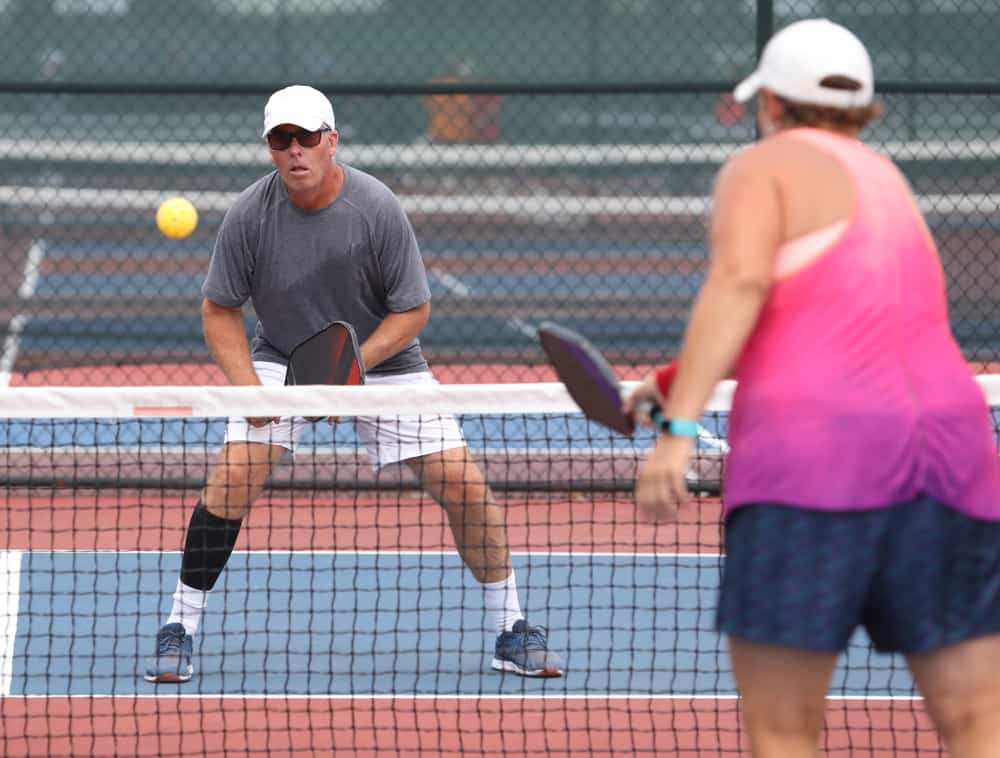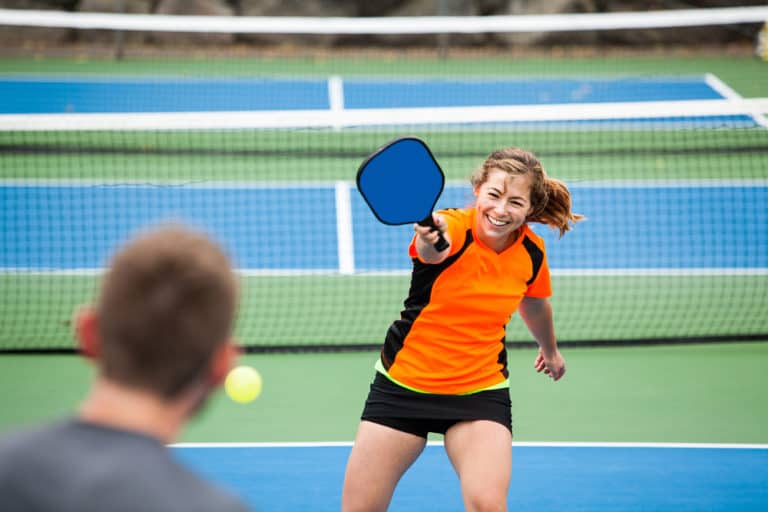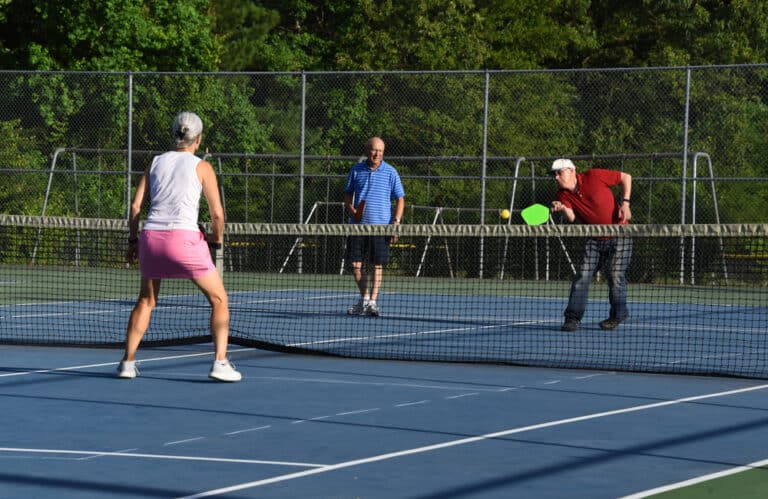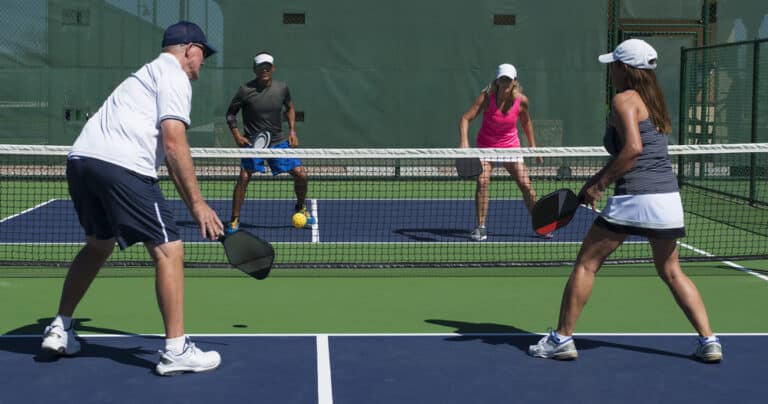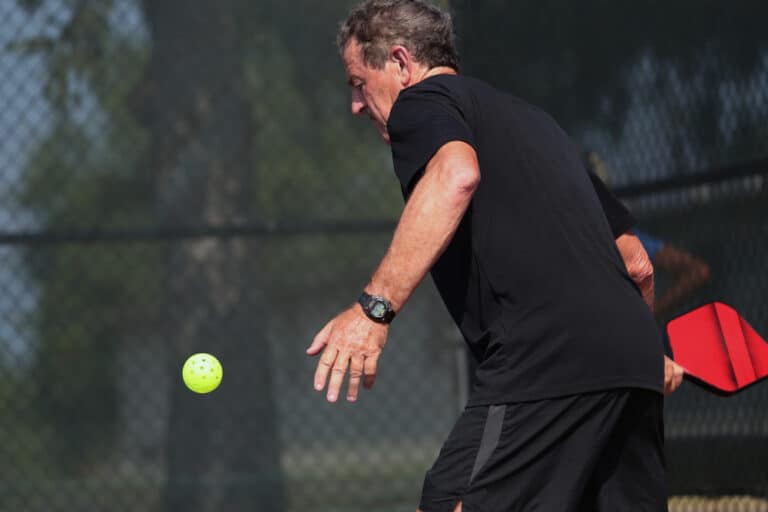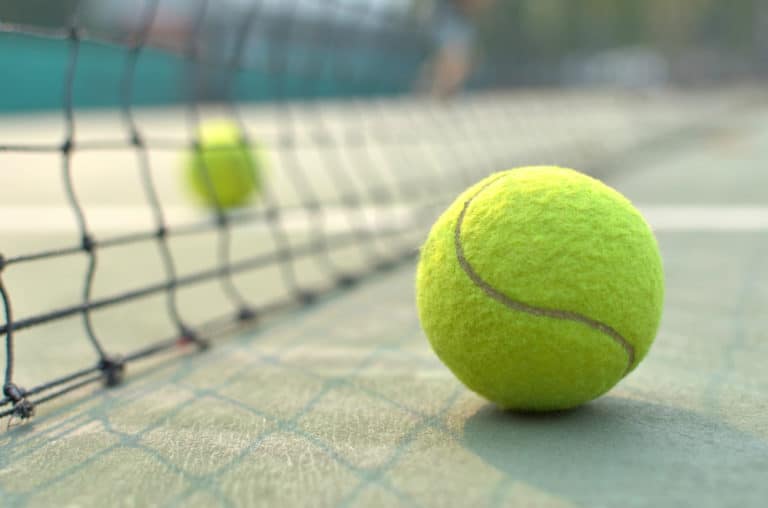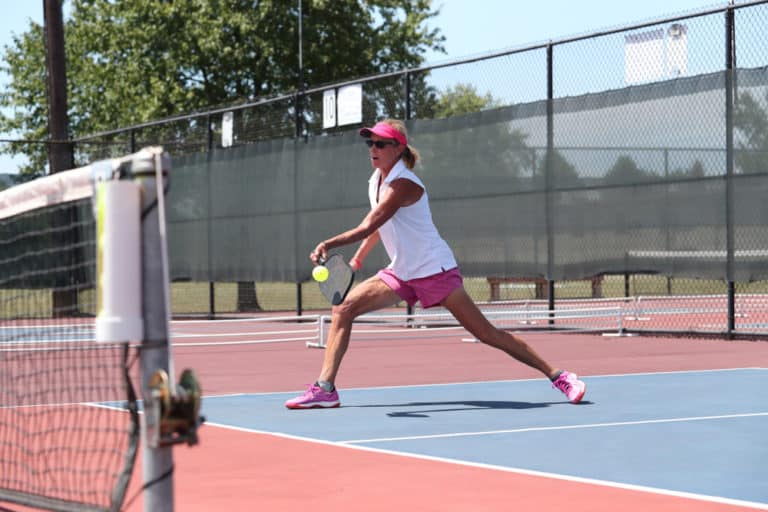Can You Jump Serve In Pickleball?
Every rally and game of pickleball starts with a serve. Knowing the rules of the serve is essential to playing an honest and fair game. Although there are many nuances to the serve, fundamental principles must be adhered to within the game’s rules. So, can you jump serve in pickleball?
You may not jump serve in pickleball because this would mean lifting both feet off the ground. One of the requirements of a serve is that at the point of contact between your paddle and the pickleball, at least one foot must be on the ground behind the baseline.
The serve is an essential part of a game of pickleball because it is the start of the rally. Among other requirements for the serve is that one foot must be touching the ground behind the baseline at the point of contact with the ball. These requirements are discussed in full below.
Is It Legal To Jump Serve In Pickleball?
According to the rules of pickleball, you may not jump serve. Although there are various nuances to the serve, one of the main requirements is that one foot is on the ground behind the baseline at all times while you are serving.
This means that you cannot jump and serve at the same time. While serving, your feet may not make contact with the pickleball court on or inside the baseline or on or outside the imaginary extension lines of the relevant sideline or centreline.
Once you have made contact with the ball on your serve and have adhered to the relevant rules, you can move your feet wherever you feel comfortable, including onto the baseline and outside the sideline and centerline extension lines.
The point of the serve is to place the ball in play. It is not intended as an offensive shot. A jump serve would involve a player increasing power and serve height by jumping to hit the ball. In pickleball, a player is limited to one service attempt at a time, meaning there is added pressure to get your serve right.
The required serving style requires you only to hit the ball while it is relatively low. You cannot toss the ball up in the air while serving. This is the case for both kinds of serves allowed in pickleball, which are expanded below.
In addition, the extra movement generated in the jump creates extra power on the ball. This can make the serve challenging to handle on the receiving end, mainly because the pickleball court is relatively small and would not accommodate a powerful shot as well as a tennis court.
This requirement is one of the three main requirements for a legal serve as stipulated by the 2021 International Federation of Pickleball Official Rulebook.
What Are The Different Ways Of Serving In Pickleball?
There are two ways you can serve in pickleball: the volley serve, or the drop serve. In both cases, the serve must be aimed toward the diagonally opposite service court.
In a volley serve, the server’s paddle strikes the ball before it hits the ground. For this serve to be legal, there are three requirements.
This includes that the server’s arm must move in an upward arc when the ball is struck. This contact can be made with either a forehand or backhand motion.
The ball must be hit underhand so that contact is made below the waist, also known as the navel. If contact is made above this boundary, the serve will be disqualified.
And the highest point of the paddle head must not be above the highest part of the wrist, where the wrist bends when it strikes the ball.
The second way of serving, the drop serve, is when a ball is dropped to the ground and bounces before the server’s paddle strikes it. The previously mentioned requirements do not apply to a drop serve, but the server cannot toss the ball in any way.
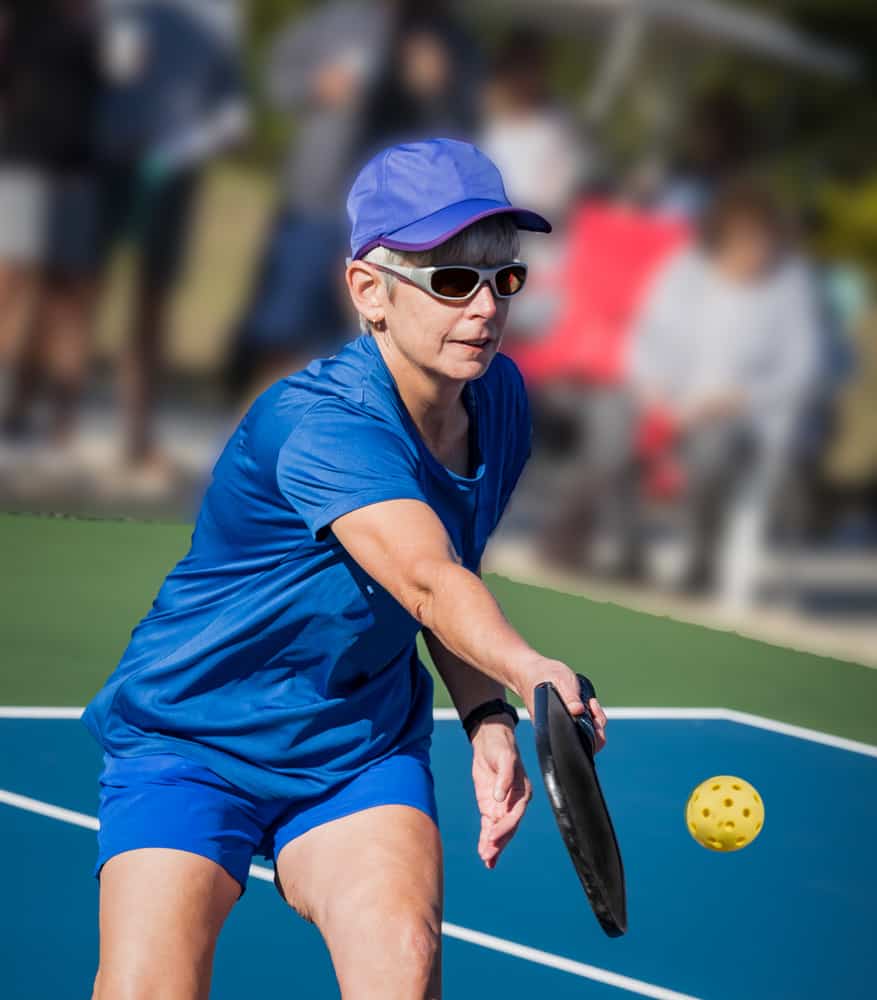
What Happens If You Do Jump Serve In Pickleball?
You will be penalized if you jump serve in pickleball because you would have committed a fault. You will automatically lose the point, and the serve will go to the opposing team.
It is essential to know and obey the rules of the game because faulting on your serve can be very costly in the game of pickleball.
Because only the team serving can score, retaining serve for as long as possible is essential. Making an error such as a jump serve will cost you points and potential.
Serves are vital because they dictate the flow of the game, can help to set up a more powerful shot in the rally and can help to set up the volley. Making a mistake on serve is tantamount to giving points away, which is obviously against the aim of the game.
What Are The Variations of Serve In Pickleball?
Players use many variations based on the two serving techniques mentioned above, the volley and drop serve.
Because the serve is such an essential element of the game, it is crucial to understand the different ways you can start a rally and how best to use this opportunity to set up a strong point.
There are four variations of serve in pickleball, which all fall under the two fundamental techniques mentioned above. Variations of these two techniques are discussed below.
The power serve is a favorite amongst pickleball players and is achieved mainly by focusing on a good follow-through. Positioning your body so you rotate your hips and end the shot with the paddle against your opposite ear is an excellent way to focus for this shot.
A centerline serve is achieved when you aim the ball in your opponent’s centerline direction, making sure to land just inside the line. This shot can take practice because the aim is important but loosening your hips and arm while making the shot can help.
The kitchen corner serve aims to land the ball outside your opponent’s kitchen. The draw of this serve is that it can lure your opponent off the court as they reach for the ball.
To hit a lob serve, you hit the ball high up into the air, which forces your opponent to move back to hit it.
Conclusion
Knowing the rules of the serve is essential to playing a fun and compelling game of pickleball. The serve is arguably one of the most important shots of the game of pickleball, and it helps to know as much about it as possible.
Obeying the rules is an integral part of being a respectful player. It is not legal to jump serve in pickleball. However, if you do this for some reason, it is essential to respect the other payers by following the rules and committing not to make a mistake again.

